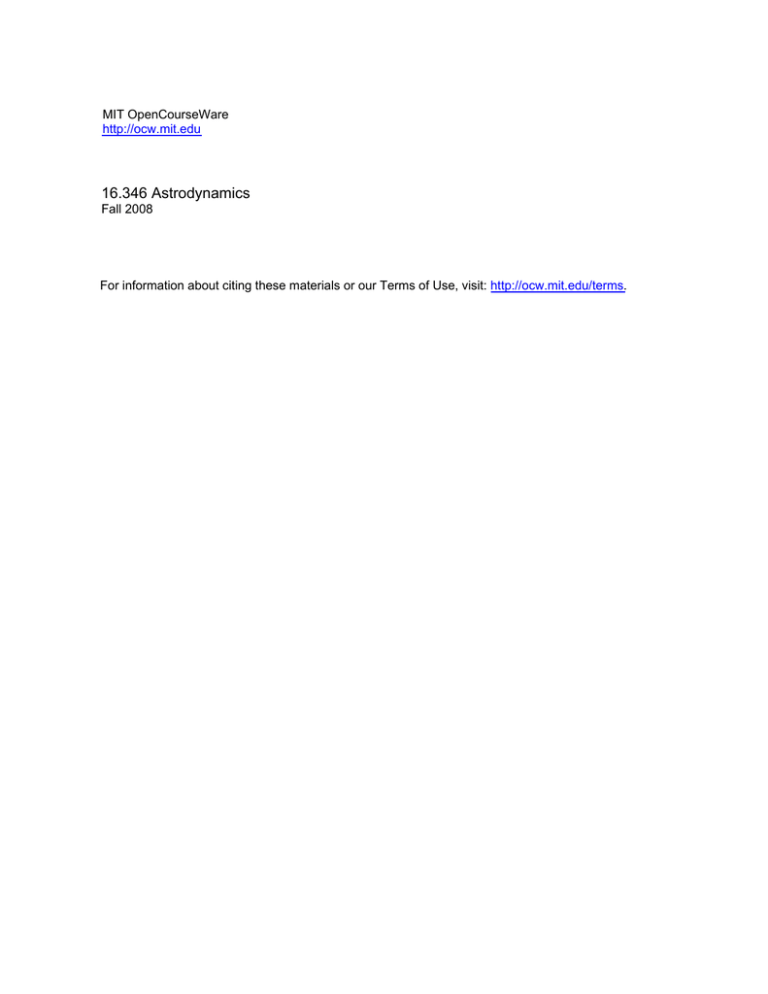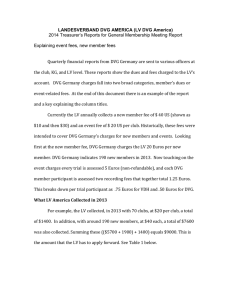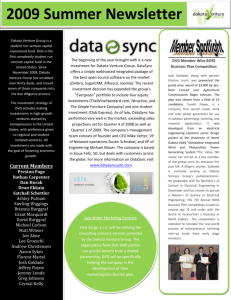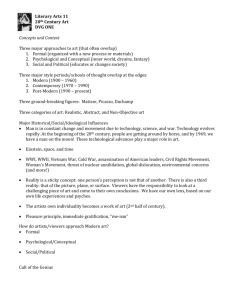16.346 Astrodynamics MIT OpenCourseWare .
advertisement

MIT OpenCourseWare http://ocw.mit.edu 16.346 Astrodynamics Fall 2008 For information about citing these materials or our Terms of Use, visit: http://ocw.mit.edu/terms. Lecture 20 Powered Flight Guidance #11.7 Powered Flight Maneuver Equations vr (t, r) Required velocity: Velocity-to-be-gained: vg (t) Vehicle velocity: v(t) v + vg = vr dvr ∂vr ∂vr dr ∂vr ∂vr ∂vr ∂vr ∂vr dv dvg + = = + = + v= + vr − v dt dt dt ∂t ∂r dt ∂t ∂r ∂t ∂r ∂r g dvg ∂vr g(r) + aT + = g(r) − v dt ∂r g dvg ∂v dvg ∂vr = − r vg − aT =⇒ = −C vg − aT where C = dt ∂r ∂r dt This is the fundamental equation for the velocity-to-be-gained. Constant Gravity Field Example dr =v dt dv =g dt r(t) = r0 + (t − t0 )v0 + 12 (t − t0 )2 g r(t0 ) = r0 v(t0 ) = v0 =⇒ or, with change of notation, r(t1 ) = r(t) + (t1 − t)vr (t) + 12 (t1 − t)2 g vr (t) = Hence C (t) = 1 [r1 − r(t) − 12 (t1 − t)2 g] t1 − t 1 ∂ vr =− I ∂r t1 − t =⇒ dvg 1 = v − aT dt t1 − t g To optimize the control of the thrust direction for the purpose of minimizing the fuel consumption, we convert the equation for the velocity-to-be-gained vector to scalar form by multiplying both sides sides by vg dvg d 2 d = (vg · vg ) = vg2 = v 2 − 2aT · vg dt dt dt t1 − t g d (t1 − t) vg2 = 2vg2 − 2(t1 − t)aT · vg dt Next, integrate by parts from the current time t to the time of engine cut-off tco �tco � tco � tco � 2 2 � (t1 − t)vg (t) � + v g (t) dt = [2v g2 (t) − 2(t1 − t)aT · vg ] dt 2vg · � tco t t t t [2(t1 − t)aT · vg − vg2 ] dt = (t1 − t)vg2 (t) = constant at the time t dvg × v g = 0 dt to maximize the integrand—the latter is referred to as Cross-Product Steering To minimize the time interval tco − t, choose aT vg or equivalently, 16.346 Astrodynamics Lecture 20 Vehicle Orientation Prior to Cross-Product Steering dvg dvr − g(r) so that = p(t) − aT dt dt Then, to determine the direction of the thrust acceleration vector aT p(t) = −C (t)vg (t) = Define a vector dvg × vg = 0 dt =⇒ aT × vg = p × vg (aT × vg ) × vg = (p × vg ) × vg (aT · vg )vg − vg2 aT = (p · vg )vg − vg2 p aT = p + (q − ivg · p) ivg To obtain q : so that where q = aT · ivg aT · aT = a2T = [p + (q − ivg · p) i vg ] · [p + (q − ivg · p) i vg ] q = a 2T − p 2 + (ivg · p)2 Clearly, cross-product steering is not possible unless a 2T > p2 . Hyperbolic Injection Guidance vr = 12 v∞ [(D + 1)i∞ + (D − 1)ir ] T 2 v ∞ (r + i∞ r)(D2 − 1) = 4µ where To obtain the C matrix, first calculate: ∂D 1 ∂i ∂v r = 12 v∞ (i∞ + ir ) + 2 v ∞ (D − 1) r ∂r ∂r ∂r ∂ r 1 ∂r 1 ∂r 1 ∂ir = = − 2 r = (I − ir iT r) ∂r ∂r r r ∂r r ∂r r 2 ∂D 2 (D − 1) = −v ∞ (i∞ + ir )T ∂r 8µD Then C = v∞ (D − 1) v 3 (D2 − 1)2 (I − ir irT ) − ∞ (i∞ + ir )(i∞ + ir ) T 2r 16µD Circular Orbit Insertion Guidance µ µ vr = in × ir = Sn r 3 r r where in and Sn are nx 0 −nz in = n y nz 0 and Sn = nz −ny nx Then C = 16.346 Astrodynamics µ S (I − r3 n T 3 2 ir ir ) Lecture 20 ny −nx 0





